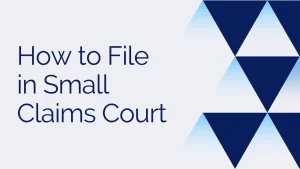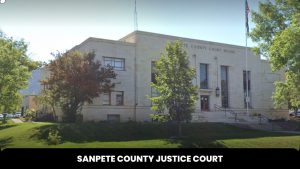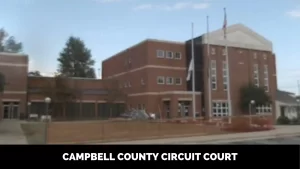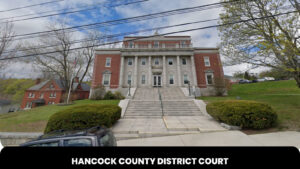District of New Jersey
Introduction
The District of New Jersey is the federal judicial district encompassing the entire state of New Jersey. As one of 94 federal judicial districts, it plays a vital role in the federal judiciary and the administration of justice in New Jersey. The district has a long and complex history, and today covers millions of New Jersey residents across three divisional courthouses. From high-profile cases to political controversies, the District of New Jersey has remained at the center of many pivotal moments in the state’s history.
History of the District of New Jersey
Early history
The District of New Jersey was one of the original 13 federal judicial districts created by the Judiciary Act of 1789. New Jersey formally became a state in 1787, and the new federal district reflected its status as one of the founding states of the nation. The original district covered the entire state, which was more sparsely populated at the time. President George Washington appointed the first District Judge in 1789, beginning the district’s long judicial history.
In its early decades, the District of New Jersey saw various changes to its size and structure. In some periods it covered both New Jersey and portions of New York. However, by 1815 it was established to cover only New Jersey. During this early 19th century period, important early cases helped establish federal authority over state governments and contributing to defining the role of federal courts.
Expansion and developments
As New Jersey’s population grew rapidly in the late 19th and early 20th centuries, the District of New Jersey continued to evolve. Additional judgeships were authorized by Congress to handle growing caseloads. In 1901, a second authorized federal judgeship was added, reflecting the district’s growing stature.
Further growth occurred in the second half of the 20th century. Modern courthouses were constructed, including the Martin Luther King Building in Newark. Congress authorized more district judges to keep pace with New Jersey’s expanding population. The district was also formally divided into the three vicinages that exist today. From its humble early origins, the District of New Jersey emerged as a major federal judicial district.
Overview of the District Today
Geographic area covered
Today, the District of New Jersey encompasses all 21 counties of the state of New Jersey. With nearly 9 million residents, it is one of the most populous federal judicial districts in the nation. This wide geographic scope includes major metropolitan areas as well as suburban and rural areas across 8,700 square miles.
Population served
The district provides judicial services to around one-third of the total population of New Jersey. This includes large populations in cities such as Newark, Paterson, Trenton, Camden, and Atlantic City. It also covers rapidly growing suburban counties such as Middlesex County, as well as more rural areas in South Jersey and Northwest New Jersey. The district serves an economically and demographically diverse population across the entirety of New Jersey.
Federal courthouses
The District of New Jersey is headquartered at the Martin Luther King Jr. Federal Building and United States Courthouse in Newark. This courthouse hosts the offices of the U.S. Marshals Service and U.S. Attorney, among others. The district has two divisional courthouses located in Camden and Trenton. This allows cases to be heard closer to where litigants are located, improving public access to the courts.
Administration and Organization
U.S. Marshal
The chief law enforcement officer for the district is the United States Marshal. The Marshal oversees security for the court system and judges, transport of federal detainees, and execution of federal warrants. The current U.S. Marshal is Juan Mattos, Jr., who oversees a staff of Deputy Marshals throughout the district.
U.S. Attorney
The chief prosecutor representing the United States in the district is the United States Attorney. Located in Newark, the U.S. Attorney oversees a staff of Assistant U.S. Attorneys who handle federal cases. The U.S. Attorney is appointed by the President of the United States and confirmed by the U.S. Senate.
Judges
The District of New Jersey is currently authorized for 17 federal district judges by Congress. These judges are appointed by the President and confirmed by the Senate for lifetime terms. Appeals from the district court are heard by the Third Circuit Court of Appeals. There are also seven federal magistrate judges that assist the district judges.
Divisions and locations
The District of New Jersey is divided into three vicinages, each with their own courthouses and judges. The Newark vicinage covers northern NJ, the Camden vicinage covers southern NJ, and the Trenton vicinage covers central NJ. Cases are assigned to the various courthouses based on factors like where the litigants are located.
Caseload and types of cases
In a typical recent year, around 13,000 cases were filed in the District of New Jersey. Around half of the caseload consists of civil cases between litigants over matters like contracts, personal injury, civil rights, employment law, and more. The other half consists of criminal cases prosecuted by the U.S. Attorney, including drug crimes, financial crimes, terrorism, and others. Bankruptcy filings also make up a portion of the overall federal caseload.
Notable Cases
Famous trials
The District of New Jersey has presided over many high-profile trials, ranging from organized crime to public corruption cases. In the 1980s and 1990s, several major Mafia trials were held targeting the five organized crime families operating in New Jersey. More recently, public corruption trials have taken center stage, including convictions of mayors, legislators, and city council members on corruption charges. These prominent trials have relied on District of New Jersey judges and juries.
Significant rulings
Federal judges in the district have handed down influential rulings that resonated beyond New Jersey. In Merck v. Reynolds, an important 2008 opinion established standards on when the statute of limitations applies in securities fraud cases. In 1952, a landmark decision found racial segregation in New Jersey public schools to be unconstitutional, helping spur the Supreme Court’s national desegregation ruling. These and other significant decisions have shaped the broader development of American law.
High-profile settlements
Numerous major class action settlements have been approved by the District of New Jersey in recent years. These include large settlements with automakers over emissions claims, banks over mortgage practices, and chemical companies over groundwater contamination. Victims ranging from homeowners to first responders have received compensation through these agreements approved by the district judges.
Controversies and Issues
Corruption scandals
Like any institution, the District of New Jersey has faced its share of controversies over the decades. In the 1970s, a major judicial bribery scandal led to criminal charges against judges and lawyers trading bribes for favorable decisions. While an extreme case, it revealed vulnerabilities to unethical conduct. Continued vigilance and oversight is required to maintain integrity.
Overcrowded dockets
Heavy caseloads have sometimes created challenges for the district. At times, federal judges have carried thousands of pending cases while new judgeships went unfilled. Efforts have been made to distribute the workload and bring in visiting judges. But sustained vacancies and growing caseloads have produced delays and backlogs. Additional resources are often required to fulfill the courts’ duties.
Sentencing controversies
Disparities in criminal sentencing by different judges have also caused controversies. Two judges gave widely different sentences to participants in the same fraud scheme, for example. Debates over sentencing fairness and consistency continue. Updated guidance from higher courts or Congress may be helpful in providing direction to district judges.
Impact on the State and Nation
Influence on New Jersey
The District of New Jersey has played an integral role in New Jersey’s political, economic, and social history for over 200 years. From the Lindbergh kidnapping case to corruption probes of Atlantic City, the federal court has shaped the state’s direction. Businesses also rely on the courts to adjudicate key cases affecting the state’s economy and residents. The federal judiciary is intertwined with New Jersey history.
Role in the federal judiciary
As part of the federal court system, the District of New Jersey also has a voice in the development of national law and precedent. With its large size and caseload, the district produces influential rulings, judges, and jurisprudence. Several district judges have been elevated to appellate courts. U.S. Supreme Court justices have come from the District of New Jersey bench. The district significantly influences broader federal case law.
Conclusion
For over 200 years, the District of New Jersey has served a vital role in the federal judiciary. Its history reflects New Jersey’s own growth into one of the largest states in America. Today it provides justice, security, and legal interpretation to millions of New Jersey residents. With its panel of distinguished judges, capable staff, and motivated litigants, the District of New Jersey will continue to administer justice and uphold the rule of law. The district remains an indispensable federal institution both for New Jersey and the nation as a whole.
FAQs
Q: How many federal courthouses are there in the District of New Jersey?
A: There are three federal courthouses, located in Newark, Camden, and Trenton. The district is divided into three vicinages served by these courthouses.
Q: Who oversees the District of New Jersey?
A: The chief judge, appointed by the chief justice of the Supreme Court, provides overall direction and supervision for the district. The chief judge serves a seven-year term in this administrative role.
Q: What is the oldest courthouse in the District of New Jersey?
A: The oldest federal courthouse still in use is the Clarkson S. Fisher Federal Building and U.S. Courthouse, located in Trenton and built in 1934. The current Newark courthouse was built in 1932.
Q: How many magistrate judges serve in the District of New Jersey?
A: Congress has authorized seven full-time federal magistrate judges to handle certain duties in the district such as preliminary criminal matters. They are appointed by district judges to renewable eight-year terms.
Q: What was the Abscam scandal in the District of New Jersey?
A: Abscam was an FBI sting operation in the late 1970s and early 1980s that resulted in bribery convictions of a U.S. Senator and members of the House of Representatives, among others. It uncovered corruption in New Jersey and nationwide.






